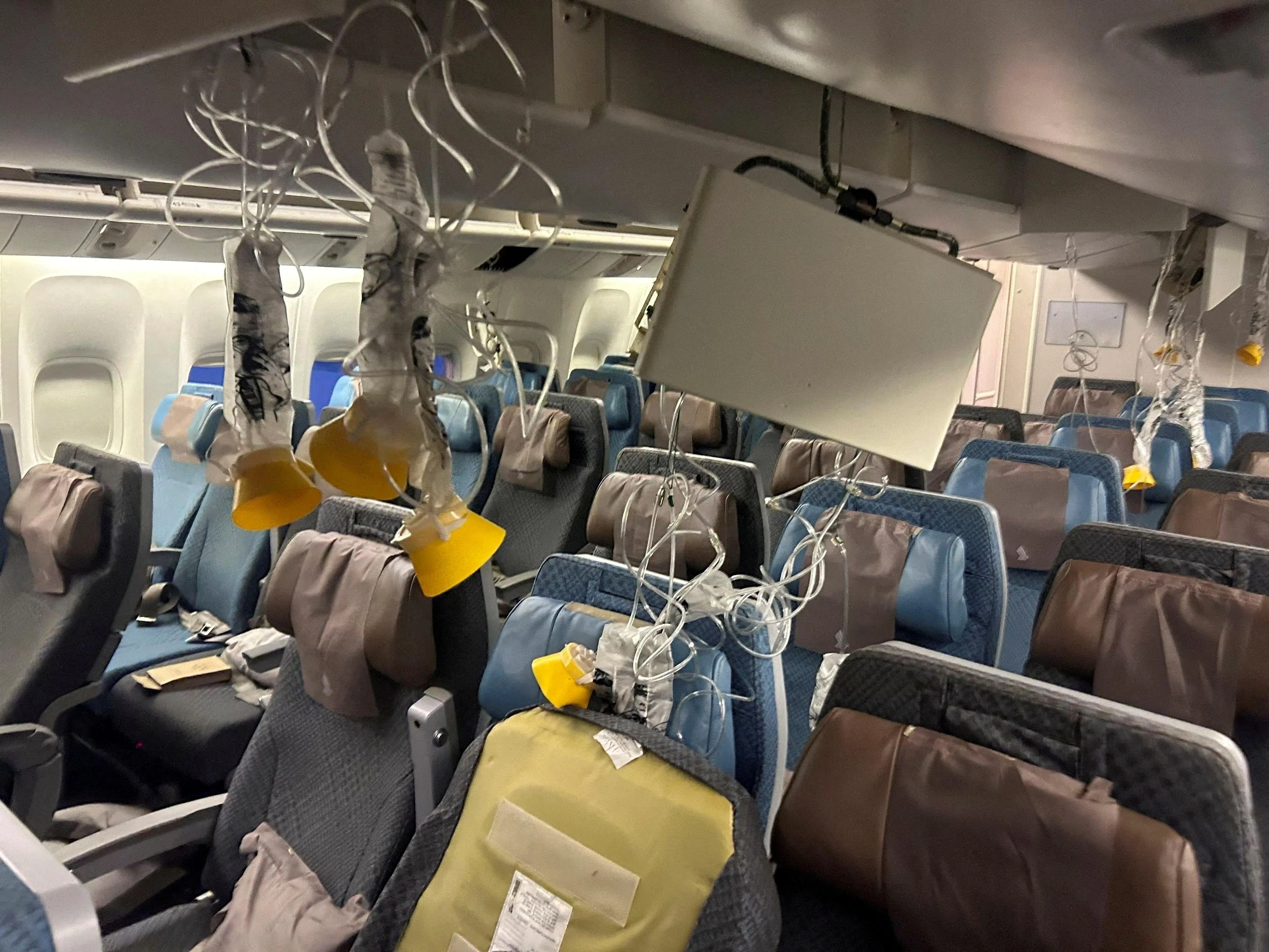The turbulence incident that caused one death and dozens of injuries in a Singapore Airlines flight lasted for about one minute, initial investigation has shown.
The injuries likely occurred during a brief duration of 4.6 seconds.
The incident happened when the aircraft was passing over the south of Myanmar at 37,000 feet (11,278 m)and “likely flying over an area of developing convective activity”, said the Ministry of Transport on Wednesday (May 29), quoting information extracted from the flight data recorder and cockpit voice recorder of SQ321.
It started at 7.49 am UTC (universal time coordinated) on May 21, or 3.49 pm Singapore time on the day, and lasted for around one minute till 7.50 am UTC.
Within this duration of one minute, the flight experienced several fluctuations of gravitational force, which were recorded as vertical accelerations.
This caused passengers who were not belted up to become airborne and fall back down within 4.6 seconds.
GET BT IN YOUR INBOX DAILY
Start and end each day with the latest news stories and analyses delivered straight to your inbox.
At the start, the aircraft experienced slight vibration for 19 seconds, during which an “uncommanded increase in aircraft altitude” to a peak of 37,362 feet was recorded.
In response to the unintended increase in altitude, the autopilot pitched the aircraft downwards to return to the selected altitude of 37,000 feet. Meanwhile, the pilots observed an uncommanded increase in airspeed which they arrested by extending the speed brakes.
Some 11 seconds after the start of the incident, recordings showed that a pilot, while managing the airspeed, called out that the “fasten seat belt sign” had been switched on.
The ministry said the uncommanded increases in both aircraft altitude and airspeed were most likely due to the aircraft being acted upon by an updraft, or an upward movement of air. The autopilot was engaged during this period.
Some 19 seconds after the first vibration, the aircraft experienced rapid changes in gravitational force with a steep drop in vertical acceleration within 0.6 seconds, followed by a sharp rise within 4 seconds.
The rapid changes in gravitational force over the brief moment resulted in an altitude drop of 178 feet, from 37,362 feet to 37,184 feet. “This sequence of events likely caused the injuries to the crew and passengers,” said the ministry.
The investigation team comprises the Transport Safety Investigation Bureau of Singapore and United States representatives from the National Transportation Safety Board, Federal Aviation Administration, and Boeing.
“In the midst of the sequence of rapid changes in gravitational force, recorded data indicated that the pilots initiated control inputs to stabilise the aircraft, disengaging the autopilot in this process,” the Ministry of Transport added.
The pilots manually controlled the aircraft for 21 seconds and re-engaged the autopilot at around 7.50 am UTC. More gradual fluctuations occurred over the next 24 seconds, while the aircraft returned to 37,000 feet.
“After the pilots were informed by the cabin crew that there were injured passengers in the cabin, the decision was made to divert to Suvarnabhumi Airport in Bangkok, Thailand.
“On the way to Bangkok, the pilots requested… medical services to meet the aircraft on arrival,” said the ministry, noting that the pilot initiated controlled descent about 17 minutes after the turbulence event to land at Suvarnabhumi Airport at about 8.45 am UTC.
The ministry said that investigation is still ongoing.




